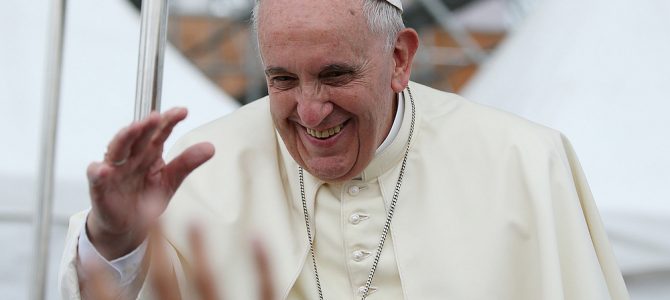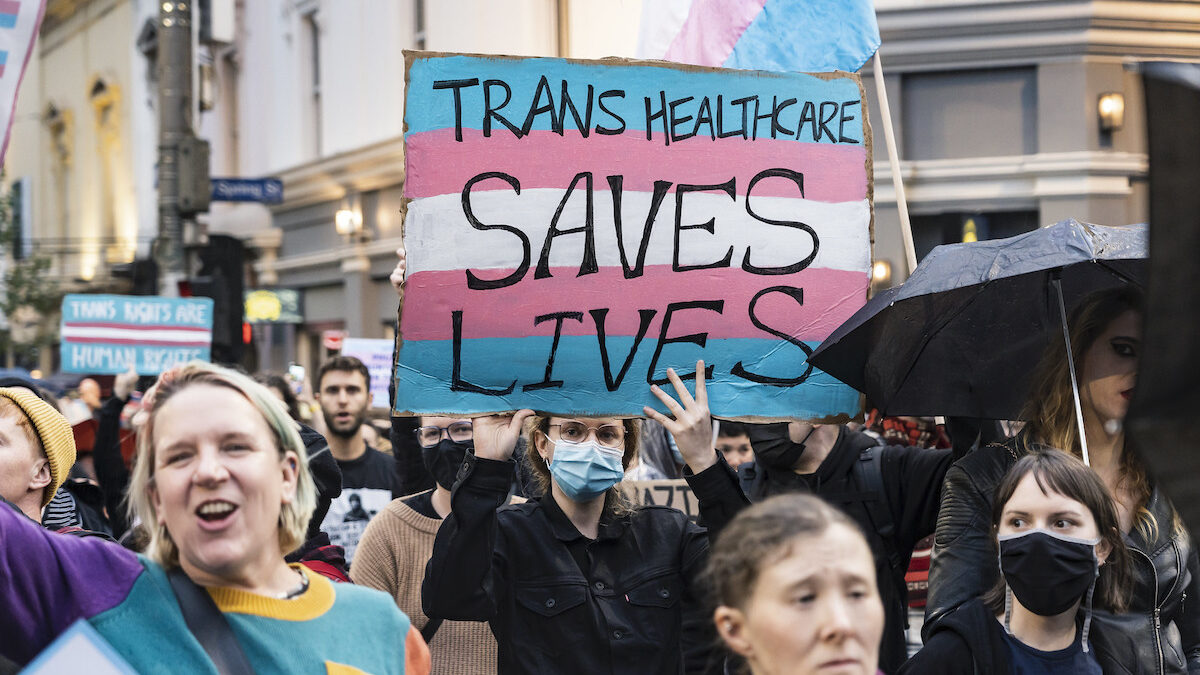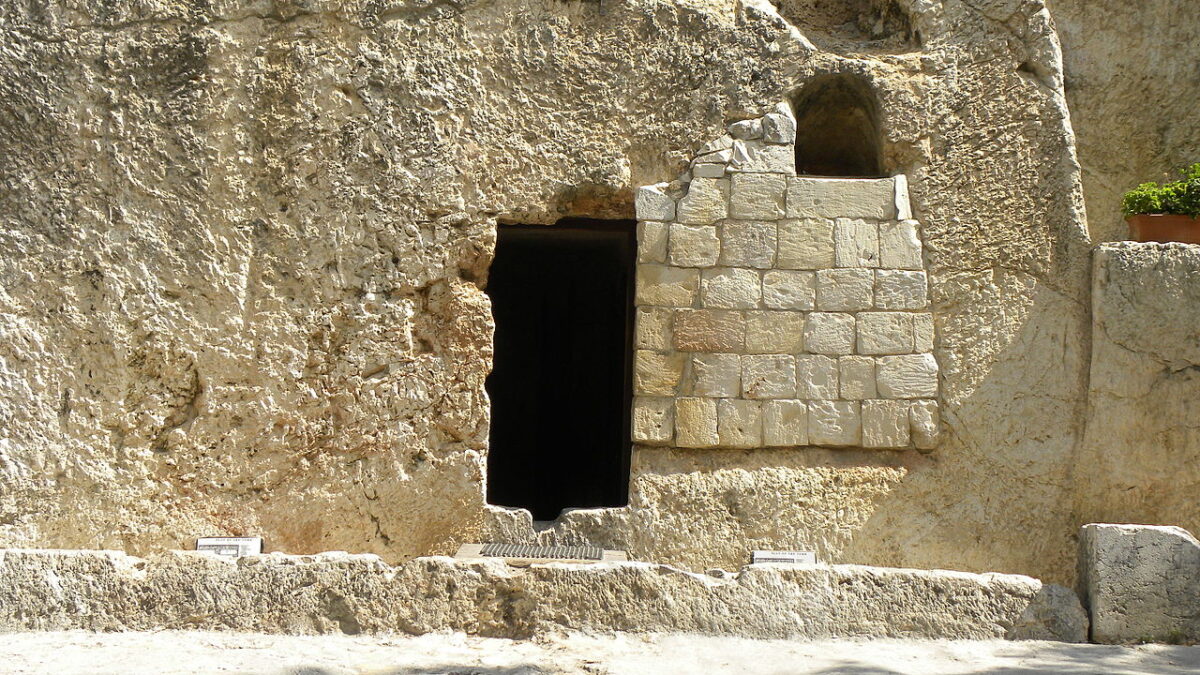
How is media done badly? Several ways. Journalists can be in the tank for a particular person, cause, or issue: witness the media’s coordination with Hillary Clinton’s 2016 campaign for president. Or the media can be openly against someone else, such as CNN’s approach to reporting on Trump. Or a journalist can be inexcusably ignorant, as many journalists are on abortion.
Our media institutions can fail in another way, in a type of quiet incompetence mixed with a low-grade partisan agenda. By way of example, witness a recent article at the San Diego Union-Tribune by Joshua Emerson Smith. Smith’s article is headlined by this astonishing announcement: “Catholic leaders: climate change on same level as abortion and death penalty.”
If you are a devout Roman Catholic, or even just someone who follows the Catholic Church with any interest, you will know what a jaw-dropper this claim is. “Catholic leaders” believe that “climate change” is on the “same level” as abortion and the death penalty? Who said this, and why?
These Issues Are Morally Quite Different
Before we get to the gristle that comprises this article, it is worth pointing out that, right away, this headline doesn’t make a lot of sense, at least not in regards to the practical theology of the Catholic Church. Why? Because the three issues presented within the headline itself—climate change, abortion, and the death penalty—are radically disparate, not merely morally but in the practical application of each issue within the church’s moral framework.
The Catholic Church, after all, teaches that abortion is a grave sin and a moral evil that can never be justified and all Catholics must oppose. But it does not teach the same thing about the death penalty, which the church allows can be justified under certain circumstances, nor does it teach the same thing about climate change. Pope Francis’s encyclical, while unequivocal in its position on climate change, is not a binding article of faith or an assertion of any concrete kind of dogma, at least from a practical environmental perspective.
So how could these three things—one of which is never allowed and always opposed, one of which is generally opposed but sometimes allowed, and one of which the theology is only just being developed and for which there is no real binding and incumbent moral duty placed upon Catholics—be “on the same level?” The phraseology itself makes no sense. These are dissimilar issues with divergent necessary moral and philosophical considerations.
So, Who Are These ‘Leaders,’ Anyway?
Well, sometimes headlines are bad, right? Maybe we can sort of jury-rig an understanding here and just move on. Does the article describe anything that could justify this rather outrageous header? Let’s look:
Opposition to abortion and the death penalty have long been cardinal beliefs for the Roman Catholic church, whose faithful make up about a quarter of all Americans.
What if fighting climate change becomes an equally passionate issue in parishes nationwide?
The foremost group of Catholic leaders in the U.S. is ramping up a campaign to do just that, urging priests and congregations from San Diego to Atlanta to think about global warming as a sanctity-of-life issue.
Well, here’s an empirical and verifiable statement: is the “foremost group of Catholic leaders in the U.S.” getting ready to launch a “campaign” to make climate change as “equally passionate [an] issue” as abortion and the death penalty?
Well, no, not really at all. The impetus for these wild claims seems to come from a few different sources, and none of the sources justify the claims. The first is from a layperson:
‘It’s clear that climate change is a pro-life issue,’ said Sarah Spengeman with Catholic Climate Covenant, a nonprofit formed in 2006 by leading U.S. bishops to work on ecological issues. ‘People are being killed by climate change already, so it’s very core to our beliefs.’
She added: ‘If we want to leave our children an inhabitable earth, if we have a responsibility to the unborn, we have a responsibly to act on climate.’
Now, you can agree with Spengeman, or you can disagree with her—and in the interest of full disclosure I’ll go ahead and say that I’m in the latter camp—but in either case two things immediately come to mind. The first is that Sarah Spengeman is not, in any really arguable way, a “Catholic leader.” I’m sure she’s an important and valuable part of Catholic Climate Covenant and that she does good work there. But it is quite a stretch to label her a “leader” in any meaningful sense, at least in relation to the structure of the Catholic Church. That’s just the nature of the institution.
That being said, it is just as much of a stretch, if not more, to assume that Spengeman is placing climate change on “the same level” as abortion and the death penalty. Even if she is right that climate change is a “pro-life” issue, this does not automatically morally equate the effects of global warming with those of abortion.
Consider: climate change is a phenomenon that arises (in part) from the burning of fossil fuels for human consumption and which may have a moderately to seriously negative effect on the world’s population some years in the future, while abortion is the direct and intentional killing of an innocent human being for the sake of immediate convenience.
Do you think Spengeman is arguing that these two issues are on the same level? I strongly doubt it. In any event, a responsible reporter might have asked her as much, particularly if his story depends upon such an equation. To his credit, Smith’s next example packs a bit more weight:
In San Diego, Bishop Robert McElroy said he ranks abortion and global warming as his two most pressing issues.
‘Climate change and the environment in general really have to do with the continuation of life on our planet, and thus we really have to come to grips with the fact that we are depleting the resources of the created order at such a rate that humanity won’t be able to survive unless we change the patterns that we’ve been engaged in,’ he said.
Again, you can agree or disagree with the Most. Rev. Bishop McElroy on the merits of present climate science and future climate projections. Elsewhere, the bishop does seem to place the incumbent moral weight of pro-liferism and environmentalism on relatively equal footing.
Regardless, even if McElroy is correct, at this point in Smith’s article we’ve gone from “Catholic leaders” to “Catholic leader.” The former sounds a bit more authoritative; the latter, less like a news story. If just one “Catholic leader” feels a certain way about a certain topic, it’s probably not going to make many waves.
So Now We Know Why This Story Exists
Thus we are left with two questions that are central to every analysis of every instance of journalism: one, what is the story about? And two, what did the journalist want the story to be about?
The answer to the first question is: the Catholic Church, particularly the United States Conference of Catholic Bishops, is in the midst of a campaign to raise awareness of, and combat, climate change, based on the Holy Father’s recent environmental encyclical. Additionally, potentially a few Catholics and at least one bishop seem to believe that there is a moral equivalence between the effects of climate change and the direct and intentional killing of an innocent human being.
It’s not much of a story, at least within the context of our society and its present values. In a secular press serving a rather secular society, it’s somewhere between a squib and a blurb.
But what did Smith want the story to be about? This seems rather clear: he wanted to paint a picture of a church in the midst of a moral and theological realignment, a religion undergoing a profound shake-up in regards to its clear and ancient doctrine. What doctrine is allegedly being shaken up is key to understanding why Smith wrote a story on such a shaky premise and with such scant and unconvincing evidence.
Many people would love to see the Catholic Church both elevate the environment and demote the unborn on the ladder of Catholic moral theology. This would serve a dual purpose in the eyes of many environmentalists: we’d pay more attention to the environment, and the number of abortions would probably increase—which, according to the environmentalists, would be another boon for the environment itself.
That realignment, however, is not likely to happen. For one, the Vatican itself says exactly the opposite. You would think that an article like Smith’s would have pointed that out, at least for the sake of thoroughness. I guess he did not consider a Vatican statement on abortion to be an important-enough detail in a story about the Catholic Church’s position on abortion.
But the point is not to quibble over who is saying what about abortion in any given moment. The sad part about this particular story is not that some Catholics believe that a theoretical future climate is as pressing an issue as actual present-day dead babies (though that’s certainly a very sad story unto itself). The story, rather, is that we have a lazy and subjective media class, one that pushes narratives instead of facts, often refuses to do much journalistic legwork, and often cannot be bothered to write an honest report about even a mildly complex subject.
It is a pity that many people will probably take away the wrong impression from Smith’s report. It is equally a pity that opinion columnists and bloggers have to do the dirty work of cleaning up these stupid messes. If journalism is in a bad way, then so, too, apparently, is copyediting.









